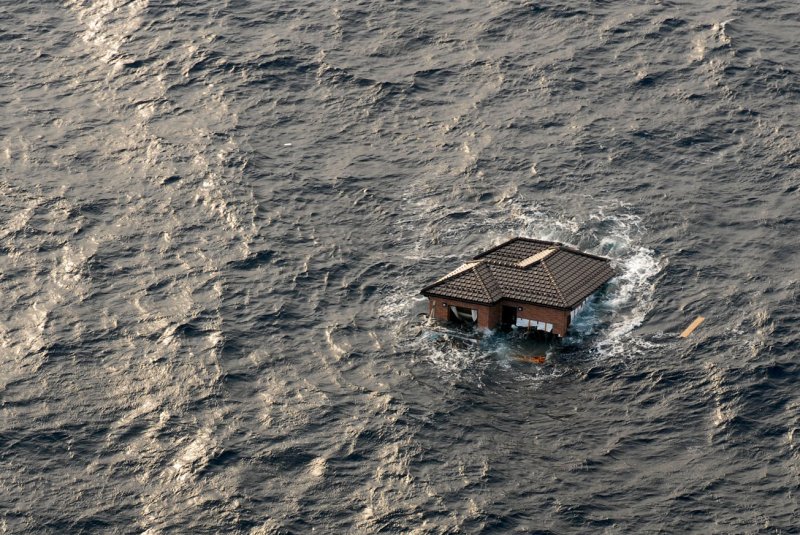A Japanese home is seen adrift in the Pacific Ocean near Sendai, Japan following a massive earthquake and tsunami. UPI/Dylan McCord/U.S. Navy |
License Photo
SYDNEY, Sept. 3 (UPI) -- The "Great Pacific garbage patch" is one of the largest collections of ocean debris in the world. It lies in the middle of the Pacific, between California and Hawaii. There are at least five other comparable patches -- debris collected in centralized locations by a confluence of large, spinning ocean currents called gyres. But who is to blame for these patches?
The currents of the ocean are many and complex; they snake and bend and collide. It follows, then, that much of the trash trapped in the centripetal forces of a major gyre also travels along a circuitous route. The Pacific trash vortex may be closest to the coasts of Hawaii and California, but that doesn't mean they're responsible for the phenomenon -- one that poses serious risk to marine ecosystems.
Recently, researchers from the University of New South Wales, in Australia, set out to predict the paths of trash that ends up in the oceans' largest garbage patches. But because the ocean is so complex, analysts devised a simpler way to understand the movements and behavior of ocean water. They created a mathematical model that divided the ocean into seven regions whose water -- because of a variety factors, including winds, salinity, temperature and more -- don't mix.
"Instead of using a supercomputer to move zillions of water particles around on the ocean surface, we have built a compact network model that captures the essentials of how the different parts of the ocean are connected," explained Gary Froyland, a mathematician at UNSW.
Froyland and his colleagues borrowed many of their ideas from ergodic theory, a strategy for understanding complex, interconnected systems by partitioning them into workable chunks. It's a strategy that's been used to study entities as large and intricate as the internet, computer chips and human society. Their work was recently detailed in the journal Chaos.
"The take-home message from our work is that we have redefined the borders of the ocean basins according to how the water moves," said oceanographer and study co-author Erik van Sebille.
In the end, researchers were able to show how trash from some parts of the world may end up floating about in garbage patches on the other side of the planet. For example, some parts of the Pacific and Indian oceans are more closely linked with the south Atlantic, than with the rest of their collective ocean waters. Similarly, a slice of the Indian Ocean mostly mixes with waters from the Pacific.
Researchers say their work can help explain how quickly trash from somewhere like Madagascar and Mozambique finds its way into the south Atlantic, or how fast Australia's garbage flows into the north Pacific. And ulimately, it could help finger the polluters with an outsized responsibility for the growing heaps of junk in the world's oceans.















